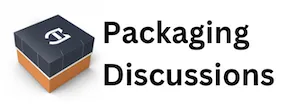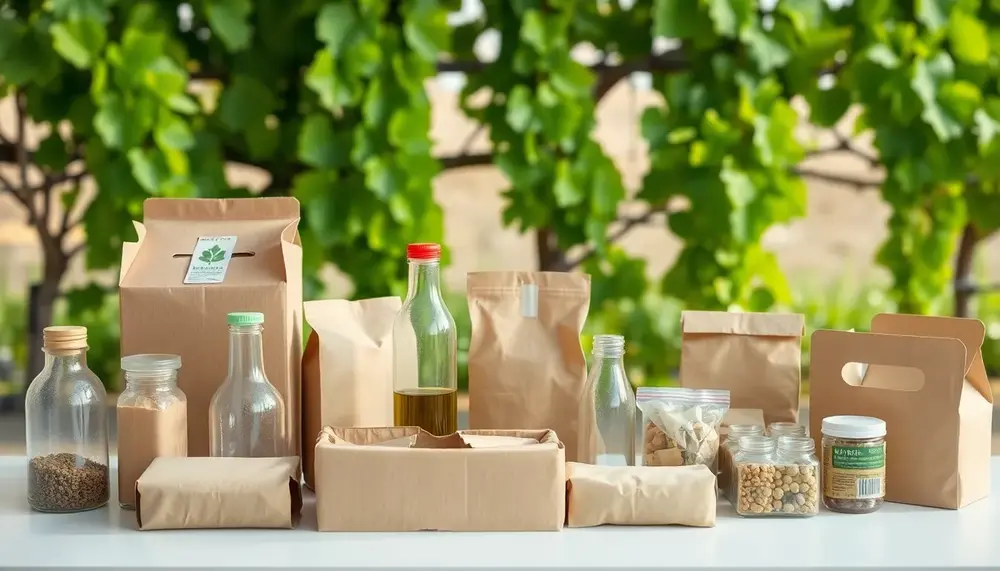Table of Contents:
Introduction: The Wine Industry's Involvement in Sustainable Packaging Alliances
The wine industry, long associated with tradition and heritage, is now at the forefront of a packaging revolution. As environmental scrutiny intensifies, wine producers are stepping up to play a pivotal role in sustainable packaging alliances. Their involvement is not just a nod to eco-trends—it’s a strategic move shaped by the industry’s unique challenges and its potential to influence broader change.
Unlike many other beverage sectors, wine faces a particular dilemma: glass bottles, the gold standard for quality and preservation, are also among the most resource-intensive packaging options. This tension has driven leading wineries and innovative brands to seek out collaborative solutions, culminating in their active participation in alliances dedicated to sustainable packaging. By pooling resources, sharing research, and leveraging collective influence, these industry players are accelerating the adoption of alternatives that balance quality, tradition, and environmental responsibility.
What’s striking is the shift from isolated sustainability efforts to coordinated, industry-wide action. Through alliances, the wine sector is not only responding to consumer demand for greener choices but also shaping the future of packaging standards across the beverage landscape. This involvement marks a significant evolution in how wine is produced, marketed, and enjoyed—one that could redefine expectations for generations to come.
Driving Forces: Why the Wine Industry Joined the Sustainable Packaging Alliance
Several compelling factors have driven the wine industry to actively participate in the Sustainable Packaging Alliance. One of the most pressing is the mounting regulatory pressure—governments and international bodies are tightening requirements around packaging waste, recyclability, and carbon emissions. Wineries, especially those exporting globally, face a complex patchwork of rules that demand proactive adaptation.
Market differentiation is another powerful motivator. As consumers increasingly scrutinize the environmental impact of their purchases, brands see sustainable packaging as a way to stand out in a crowded marketplace. For many wineries, aligning with a recognized alliance signals credibility and a genuine commitment to sustainability, which can foster loyalty among eco-conscious buyers.
Operational efficiency also plays a role. Through alliance membership, wineries gain access to shared research, pooled resources, and economies of scale when trialing new packaging formats. This collaborative approach helps reduce the risks and costs associated with innovation, making it easier for even smaller producers to participate in sustainable transitions.
Finally, there’s a sense of industry stewardship. Many wine producers view their participation as a responsibility—not just to their own bottom line, but to the broader agricultural landscape and future generations. By joining forces in the Sustainable Packaging Alliance, they hope to set new benchmarks that ripple out beyond their own sector.
Pros and Cons of Wine Industry Involvement in Sustainable Packaging Alliances
| Pros | Cons |
|---|---|
|
|
The Alternative Packaging Alliance: Composition and Key Objectives
The Alternative Packaging Alliance (APA) brings together a diverse group of stakeholders from across the wine value chain. Its membership includes pioneering wineries, packaging innovators, sustainability consultants, and logistics experts. This blend of expertise ensures that the alliance is not just a talking shop, but a practical driver of change within the industry.
- Collaborative Development: APA fosters cross-disciplinary collaboration, encouraging members to co-create and pilot new packaging concepts that can be scaled across the sector.
- Standardization: The alliance is committed to developing industry-wide guidelines for sustainable packaging, aiming to streamline adoption and reduce confusion among producers and consumers alike.
- Knowledge Sharing: Regular workshops and open forums allow members to share data, insights, and lessons learned from real-world trials—accelerating progress and avoiding duplication of effort.
- Consumer Education: APA invests in campaigns to inform the public about the benefits and performance of alternative packaging, aiming to shift perceptions and drive acceptance.
- Policy Advocacy: The alliance actively engages with policymakers to shape regulations that support innovation and environmental responsibility, ensuring the wine industry’s voice is heard in legislative debates.
By combining these objectives, the APA is uniquely positioned to catalyze a shift toward packaging solutions that are both environmentally sound and commercially viable.
Innovative Packaging Solutions in Wine: Real-World Examples
Innovative packaging solutions are making serious waves in the wine industry, and some of them might surprise even seasoned oenophiles. Instead of sticking to the status quo, forward-thinking producers are experimenting with materials and formats that upend traditional expectations.
- Flat Wine Bottles: Some wineries have introduced flat, lightweight bottles made from recycled PET. These bottles stack efficiently, slashing transport emissions and saving shelf space. They’re shatterproof, too—handy for outdoor events or shipping long distances.
- Paper-Based Bottles: A handful of brands now offer wine in bottles crafted from molded paper with a food-grade liner. These bottles are dramatically lighter than glass and boast a much lower carbon footprint. They’re also easy to recycle, which appeals to eco-conscious consumers.
- Wine in Cans: Once unthinkable, canned wine is gaining traction for its portability and recyclability. The aluminum cans chill quickly, are perfect for single servings, and have a recycling rate that far outpaces glass in many regions.
- Bag-in-Box Formats: Modern bag-in-box wines have shaken off their old reputation. They keep wine fresh for weeks after opening and use up to 90% less packaging by weight compared to glass bottles. For large gatherings or by-the-glass service, this is a game-changer.
- Reusable Glass Programs: Some urban wineries are piloting deposit-return schemes for glass bottles, encouraging customers to bring them back for cleaning and reuse. This circular approach slashes waste and builds customer loyalty.
Each of these solutions addresses a different pain point—whether it’s reducing emissions, improving convenience, or boosting recyclability. Together, they signal a bold shift in how wine is packaged, shipped, and enjoyed.
Setting Sustainability Standards: Impact on Industry and Stakeholders
Establishing clear sustainability standards within the wine industry is more than a box-ticking exercise—it’s a catalyst for measurable change across the entire value chain. When the industry aligns on definitions and benchmarks for sustainable packaging, it creates a ripple effect that touches producers, suppliers, retailers, and even regulatory bodies.
- Producers gain a framework for evaluating and improving their packaging choices, making it easier to invest in materials and processes that genuinely reduce environmental impact.
- Suppliers are incentivized to innovate, knowing there’s a consistent set of criteria to meet. This leads to a more dynamic market for sustainable materials and technologies.
- Retailers benefit from standardized labeling and certification, which simplifies communication with consumers and helps build trust in eco-friendly claims.
- Regulators can reference industry standards when crafting policy, leading to more effective and targeted legislation that supports both business growth and environmental protection.
Perhaps most importantly, these standards foster transparency and accountability. Stakeholders can track progress, compare results, and identify areas for further improvement. The net effect? A more resilient, forward-thinking industry that’s equipped to meet both today’s demands and tomorrow’s challenges.
Consumer Engagement and the Shift Toward Eco-Friendly Wine Packaging
Consumer engagement has become a driving force behind the adoption of eco-friendly wine packaging. People aren’t just buying wine—they’re voting with their wallets for brands that align with their values. This shift is visible in the way consumers actively seek out packaging that’s clearly labeled as sustainable, recyclable, or made from renewable materials.
- Interactive digital tools, like QR codes on bottles, now let consumers trace the environmental journey of their wine, from vineyard to packaging. This transparency builds trust and encourages repeat purchases.
- Social media campaigns and influencer partnerships have amplified the conversation around sustainable wine packaging, turning eco-conscious choices into a visible lifestyle statement.
- Wine clubs and subscription services are experimenting with member-driven feedback loops, allowing customers to rate and review new packaging formats. This real-world input is shaping future design decisions.
- Retailers are responding by dedicating shelf space to wines with verified eco-friendly packaging, making it easier for shoppers to identify and choose greener options.
Ultimately, this heightened engagement is nudging the entire industry to move faster. As consumers become more informed and vocal, their preferences are reshaping not just packaging, but the very way wine is marketed and delivered.
Implications for the Future: How the Alliance Shapes Sustainability in Wine
The future of sustainability in wine is being rewritten by the alliance’s strategic actions and bold vision. By prioritizing collaborative research, the alliance is laying the groundwork for packaging breakthroughs that go beyond incremental improvements. Expect to see a rise in cross-industry partnerships, where lessons from food, cosmetics, or even tech sectors are adapted to wine packaging—opening doors to unexpected solutions and smarter resource use.
Data-driven decision-making is set to become the norm. The alliance is piloting industry-wide tracking systems to measure environmental impact in real time, empowering producers to make swift, evidence-based changes. This could lead to dynamic packaging standards that evolve as new materials and technologies emerge, rather than remaining static for years.
- Global harmonization: The alliance is working to align sustainability criteria internationally, reducing confusion for exporters and streamlining compliance worldwide.
- Incentivizing innovation: Targeted grants and recognition programs are on the horizon, rewarding wineries that pioneer game-changing packaging or supply chain models.
- Consumer co-creation: Future initiatives may involve consumers directly in the design and testing of new packaging, blurring the line between producer and end user.
In short, the alliance is not just shaping packaging—it’s setting a precedent for how industries can collaborate to tackle complex environmental challenges. The ripple effects could inspire other sectors to follow suit, amplifying the impact far beyond the world of wine.
FAQ: Sustainable Packaging Innovations in the Wine Industry
Why is sustainable packaging important for the wine industry?
Sustainable packaging is vital for the wine industry because traditional glass bottles have a high carbon footprint due to resource-intensive production and transportation. Implementing eco-friendly alternatives reduces environmental impact, supports climate goals, and addresses consumer demand for responsible products.
What is the Alternative Packaging Alliance (APA) in the wine sector?
The Alternative Packaging Alliance (APA) is a collaborative initiative of wineries, packaging innovators, and sustainability experts dedicated to developing, promoting, and standardizing environmentally friendly packaging solutions in the wine industry. The alliance accelerates innovation and sets new benchmarks for industry sustainability.
Which new packaging solutions are being adopted in the wine industry?
Innovative packaging solutions now include flat bottles made from recycled PET, paper-based wine bottles, recyclable aluminum cans, modern bag-in-box formats, and deposit-return reusable glass programs. These options aim to lower emissions, improve recyclability, and increase consumer convenience without compromising wine quality.
How do alliances like APA influence industry standards and regulations?
Alliances such as APA play a crucial role in shaping industry-wide sustainability standards. By uniting stakeholders, they streamline guideline development, foster knowledge sharing, and engage regulators and policymakers to ensure legislation supports innovation and environmental protection in wine packaging.
How are consumers involved in the shift to eco-friendly wine packaging?
Consumers drive the adoption of sustainable packaging by seeking environmentally labeled products and participating in feedback through wine clubs, digital platforms, and retail choices. Alliances and producers also engage consumers through transparency, education campaigns, and involvement in new packaging design decisions.






